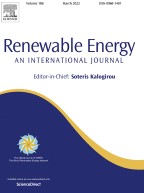
The development of renewable energy industry is an important measure for countries to strengthen the construction of ecological civilization.

Adequately addressing the grand challenge of poverty requires addressing resource scarcity. However, efforts to provide resources as a means of poverty alleviation have met with mixed success.
The goals of ending extreme poverty by 2030 and working towards a more equal distribution of incomes are part of the United Nations’ Sustainable Development Goals.

Drawing from his own extensive ethnographic and quantitative research, Desmond outlines the trends that led to the current situation: rising housing costs, stagnant or falling incomes among the poor, and a shortfall of federal housing assistance.
Wealth and income are disproportionately distributed among the global population. This has direct consequences on consumption patterns and consumption-based carbon footprints, resulting in carbon inequality.

Geography of poverty (GOP) or poverty geography is a branch of human geography, which studies the geographical patterns, distribution characteristics, areal types and evolution mechanism of poverty and the relationship with geographical environment as well as antipoverty measures.

Economic outcomes reflect an intricate mixture of people’s internal dispositions and external circumstances that are beyond their control. How, then, do people make sense of wealth and poverty?

The global response to the COVID-19 crisis of severely restricting international travel and business operations has been accompanied by slowing economic growth and increased levels of global poverty. The paper uniquely links ideas associated with behavioral economics, international business theories and empirical evidence with reducing poverty as we move past the COVID-19 crisis
